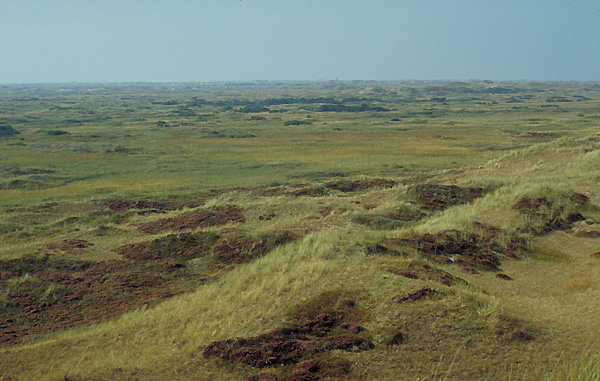
| Hulsig Hede (Hulsig Heath) near the tip of
Jutland is a large (c. 20 sq.
km.) nature reserve with sanddunes and coastal heath. Some of the dunes
reaches 25 m varying with wet depressions and plains with stones. The
nature
reserve is open for the public all around the year.
The introduced Dwarf Mountain-pine (Pinus mugo) is a problem in the area. The pine was formerly planted in the big plantations established to slow down the sand drift. But this hardy tree thrive fine in the rough climate and has spread from the plantations out in the open. You can see a stand of Pinus mugo in the middle of the picture. The spread of the tree is now kept down through clearing and burning. On Hulsig Hede breed the rare birds Tawny Pipit (Anthus campestris) and Wood-Lark (Lullula arborea), and resting eagles and other raptors are often seen in the open areas. The vegetation is much alike the West Jutland heaths, but some plant species are particular caracteristic in this coastal heath terrain. |